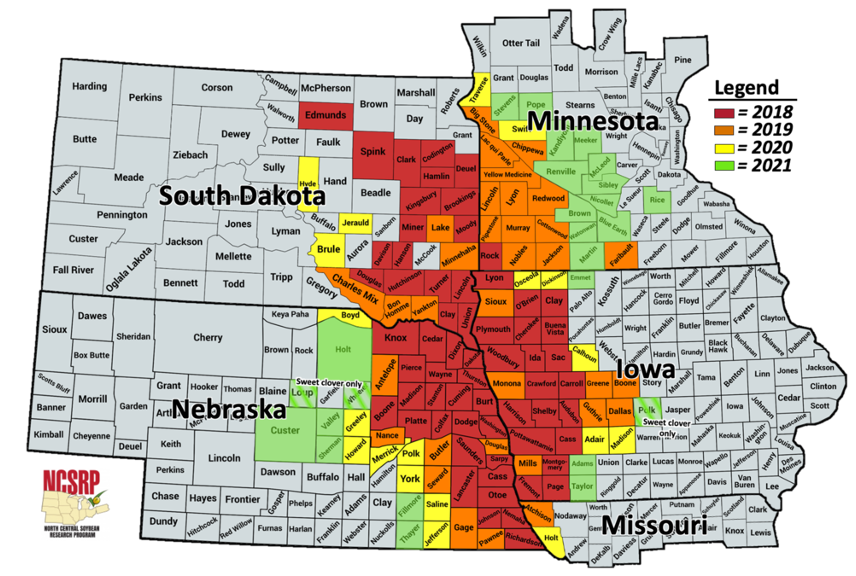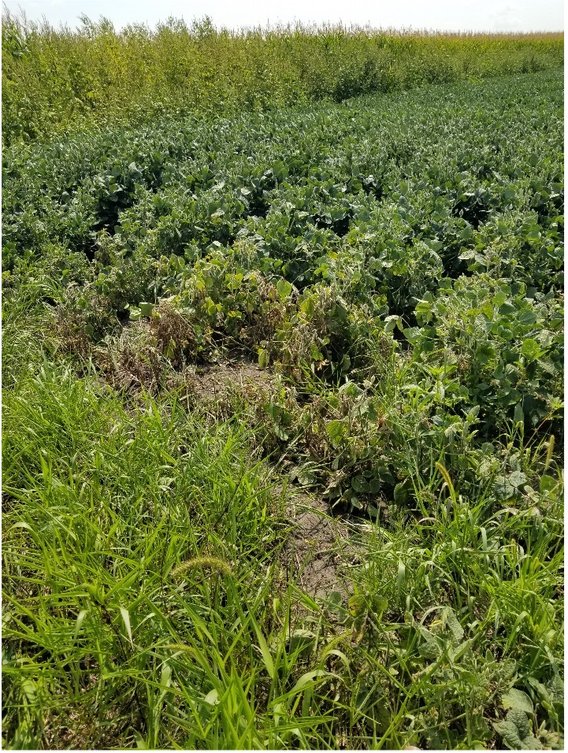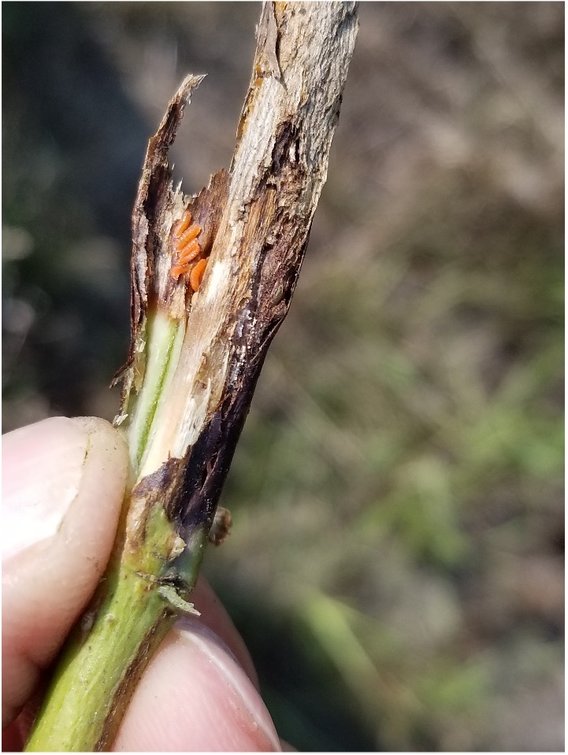8/20/2021 | Volume 24 Issue 13
This newsletter and the advice herein are free. You usually get what you pay for.
Greetings,
Soybean gall midge has been found in 139 counties in five states with 25 new counties this year (Figure 1). Overall, 2021 crop injury from soybean gall midge in Minnesota has been less than previous years. However, as the second larval generation developed during late July and August 2021, infestations became easier to locate and the soybean gall midge has now been detected in 12 more Minnesota counties.
These new county infestations were not at high soybean gall midge population densities. For most of these MN detects, there were not symptoms of dead or wilted plants to provide clues (Figure 2). We needed to look for symptoms at the base of stems (Figure 3) beneath normal-appearing canopies. In some cases, brittle stems resulting from soybean gall midge injury made finding the larvae easier but even then, only a few infested plants were found in these fields. This week, a sharp-eyed farmer in Traverse County found soybean gall midge by inspecting a single plant with a broken stem in one of his fields.
We have also observed soybean gall midge in Minnesota on the alternate host sweet clover. It has not yet been found on dry beans in commercial fields or potted greenhouse grown dry bean cultivars plants placed in infested fields.
We are still capturing emerging soybean gall midge adults, so soybean death and stem breakage is likely to continue over the next several weeks. If you observe soybean gall midge, particularly in a Minnesota county where it has not yet been confirmed, please contact [email protected] or [email protected]. Infestations can be confirmed with a photo and field location.
Updated distribution maps, gall midge adult emergence and other information is available at: https://soybeangallmidge.org/.
Checkoff dollars through the North Central Soybean Research Program and Minnesota Soybean Research and Promotion Council have helped support these survey activities.



EPA revokes crop tolerances for chloryprifos
The potential loss of chlorpyrifos (e.g., Lorsban) as a crop protection chemical has loomed for some time. The recent decision means that chlorpyrifos will no longer be allowed for use on crops after the current growing season. This crop news article discussed the EPA decision and alternatives for MN crop production.
Corn disease
Although it is a dry, it does not mean pathogens are taking a year off. See this article for information on tar spot of corn.
Harvesting drought-stressed corn
Because of uneven maturity influenced by drought stress, there will likely be some grain moisture issues at harvest.
Some have decided to not take some droughty fields to grain and there has already been some silage chopped in SW MN. There are several good recent articles on harvesting drought-stressed corn for silage, etc. See Harvesting drought stressed corn for silage and Harvesting drought-stressed corn as baleage.
Events
Missed the corn rootworm field day at the SWROC at Lamberton last week, here is another opportunity at Rosemount.
Happy trails,
